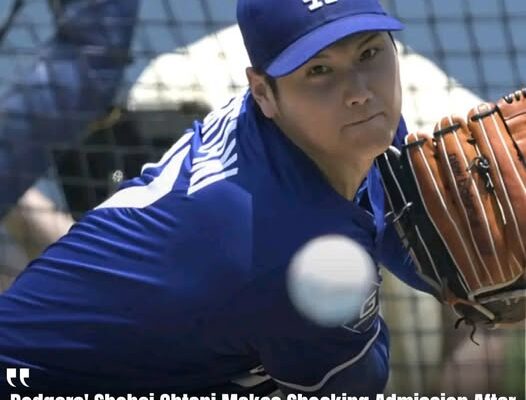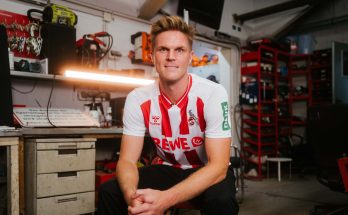The hum of the post-game clubhouse was a familiar symphony, but on this particular night, there was an added layer of anticipation. Shohei Ohtani, having just completed his long-awaited pitching debut for the Los Angeles Dodgers, sat before a throng of reporters, cameras clicking, microphones poised. The air was thick with questions about his velocity, his command, the feel of the ball, and, perhaps most importantly, the immense psychological hurdle of returning to the mound after 663 days, a second Tommy John surgery, and a highly scrutinized offseason. Everyone expected a measured, professional assessment, a typical Ohtani response that focused on the team and the process. What they got, however, was a surprisingly candid and deeply personal disclosure, a glimpse into the mind of a singular athlete carrying the weight of expectation and the burden of his own unparalleled talent.
He began, as always, with gratitude. Through his interpreter, Will Ireton, Ohtani expressed profound thanks to the doctors, the training staff, his teammates, and the fans who had supported him through the arduous rehabilitation process. This was expected, a common courtesy from an athlete appreciative of the infrastructure that allowed his return. He acknowledged the imperfect results of his one-inning outing – allowing a run on two hits – but quickly pivoted to the most crucial takeaway for him: “I feel good and healthy.” This, too, was a relief to hear, the primary concern for anyone watching his return. The 100.2 mph fastball he threw, a stark affirmation of his regained arm strength, was mentioned with a quiet satisfaction. He also reiterated the plan to pitch once a week, hoping to extend his outings to ease the burden on the bullpen, a practical and team-oriented outlook.
But then came the unexpected. The question was simple enough: How did it feel to be back on the mound? Ohtani paused, a slight shift in his posture, and then, a rare crack in the stoic façade. “I was more nervous than when I’m just a hitter,” he admitted. The words hung in the air, a revelation from a player who has consistently displayed an almost unnerving calm in the most high-pressure situations. This wasn’t the typical “game jitters” expected of any athlete. This was a deeper, more profound sense of apprehension.
He elaborated, explaining that his “arm was moving a little too fast,” causing pitches to drift “more to the glove side than I anticipated.” For a pitcher whose mechanics are so finely tuned, whose control is often surgical, this admission of a physical manifestation of his nerves was particularly striking. It painted a picture of a man, even one of his immense talent, susceptible to the very human experience of anxiety when confronting such a monumental moment. The unicorn, it seemed, was not immune to the trembling hands and racing heart of a mortal.
The revelation offered a rare window into the internal world of Shohei Ohtani. Fans and media often marvel at his composure, his seemingly unflappable demeanor whether he’s hitting a towering home run or striking out the side with devastating pitches. He is often perceived as an almost robotic figure of athletic perfection, impervious to the emotional turmoil that plagues lesser mortals. Yet, here he was, admitting to a vulnerability that resonated with anyone who has ever faced a high-stakes challenge. The fact that the nerves affected his physical execution – causing his arm to speed up and his pitches to stray – made the disclosure even more compelling. It wasn’t just a mental state; it was a physical response to the immense pressure.
This wasn’t a calculated statement; it felt genuine, a moment of unvarnished honesty that transcended the usual post-game clichés. It humanized the global phenomenon, reminding everyone that beneath the incredible talent and the superhuman feats lies a person who experiences the same anxieties and pressures as anyone else, albeit on a grander, more public stage. The weight of expectation, the prolonged absence, the uncertainty of how his body would respond after a second major surgery – all of it coalesced into a tangible nervousness that he chose to share.
His willingness to admit this vulnerability was, in its own way, as powerful as any 100 mph fastball. It fostered a deeper connection with the audience, moving him from a distant, almost mythical figure to someone relatable. It also subtly underscored the magnitude of what he had achieved. To feel such profound nerves, to have his physical mechanics slightly impacted by them, and still deliver a relatively effective outing, hitting triple digits on the radar gun and getting key outs, speaks volumes about his underlying talent and sheer willpower. He wasn’t perfect, but he was resilient, adapting even as his body reacted to the emotional intensity of the moment.
The discourse around Ohtani often focuses on his physical prowess, his unprecedented ability to excel at the highest level as both a hitter and a pitcher. But his unexpected disclosure after his pitching debut shone a light on the mental and emotional fortitude required to operate in such a unique and demanding space. It highlighted the courage it takes to not only return from a significant injury but to do so under the brightest lights, with the entire baseball world watching and judging every pitch.
This was more than just a press conference soundbite; it was a moment of connection. It transformed the conversation from merely analyzing his velocity or pitch mix to appreciating the mental game he constantly plays, the internal battles he overcomes. It reminded everyone that even a unicorn can feel nervous, and perhaps, in that very admission, lies a deeper, more profound aspect of his greatness. He is not just an athlete who defies logic with his skills; he is an individual who grapples with the immense pressures of his profession, and in his openness, he offers a powerful lesson in resilience and authenticity. The Dodgers and their fans welcomed back a pitcher, but they also gained a more intimate understanding of the man behind the legend.



